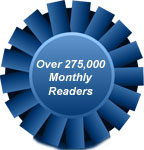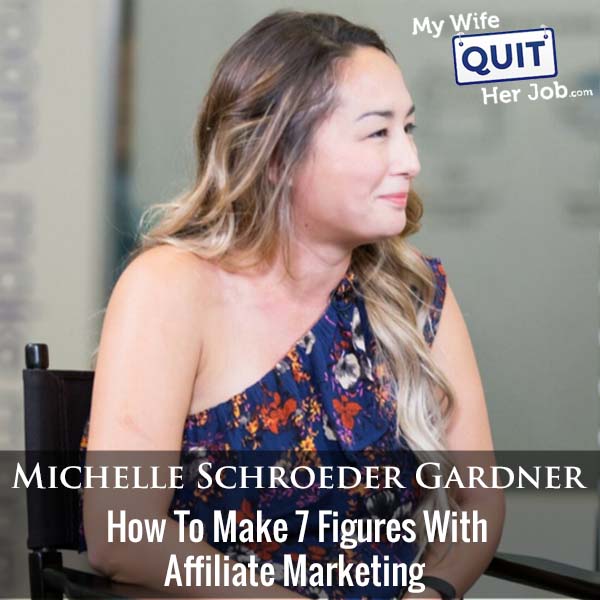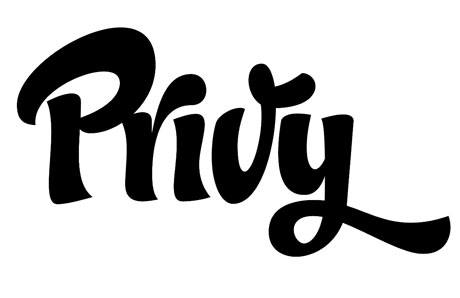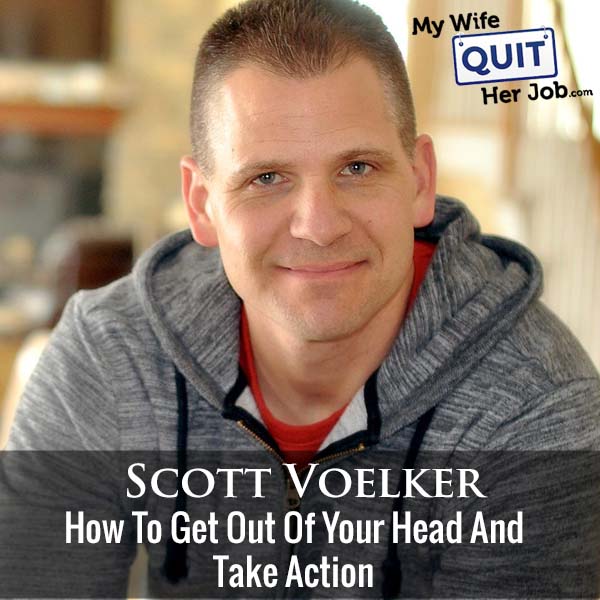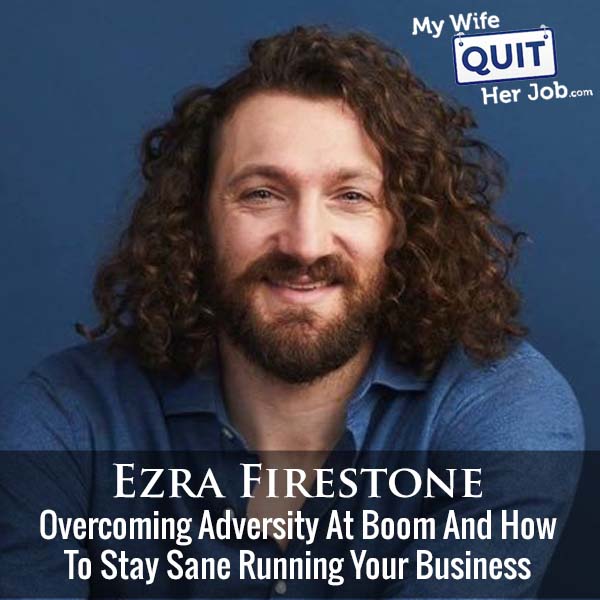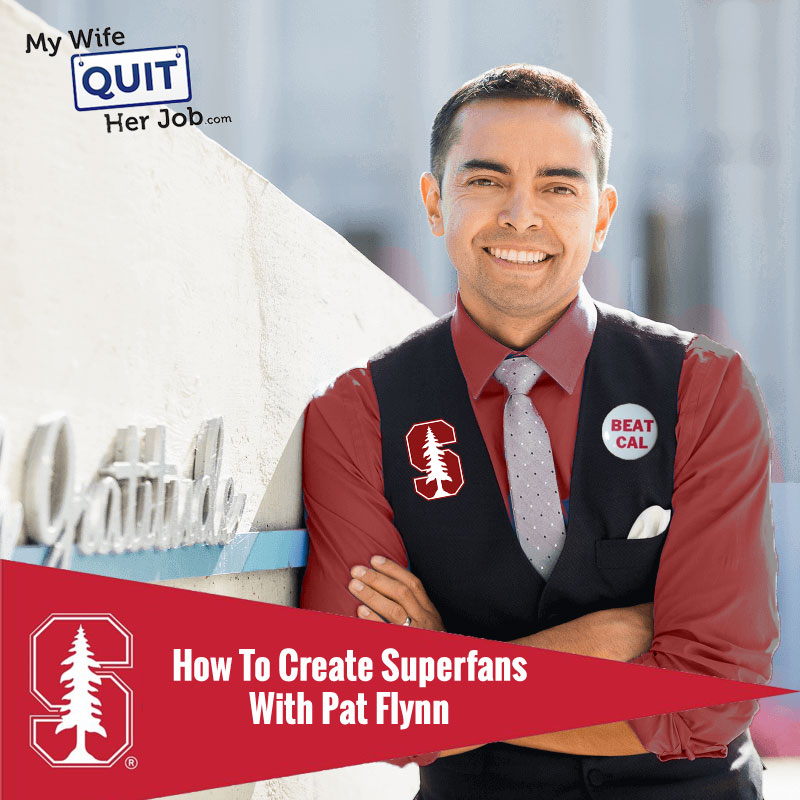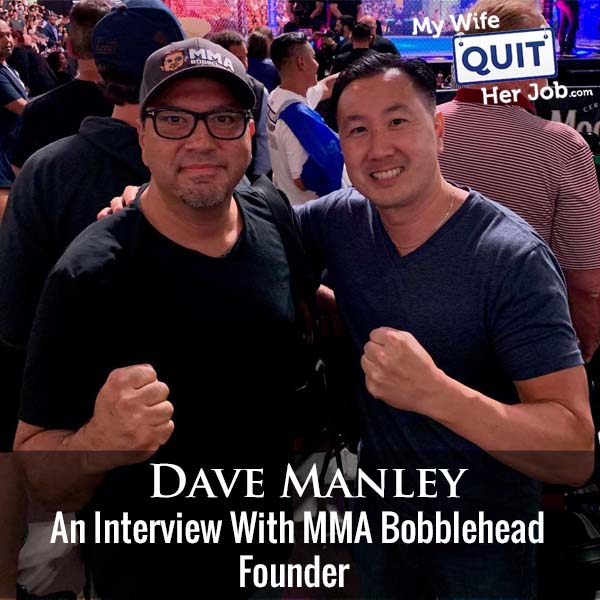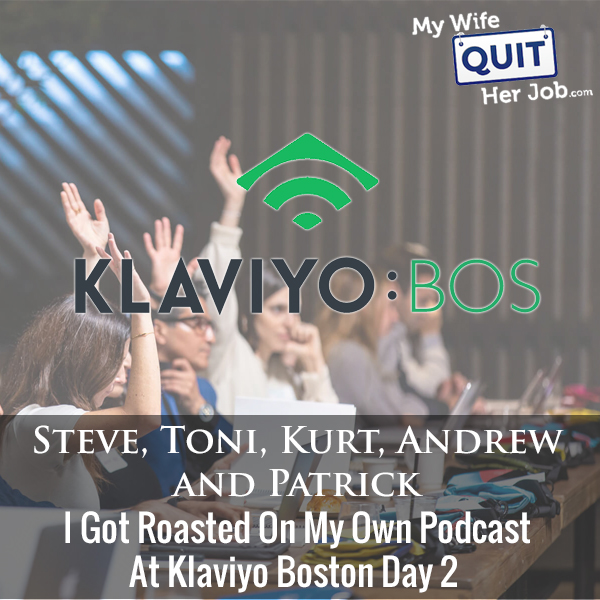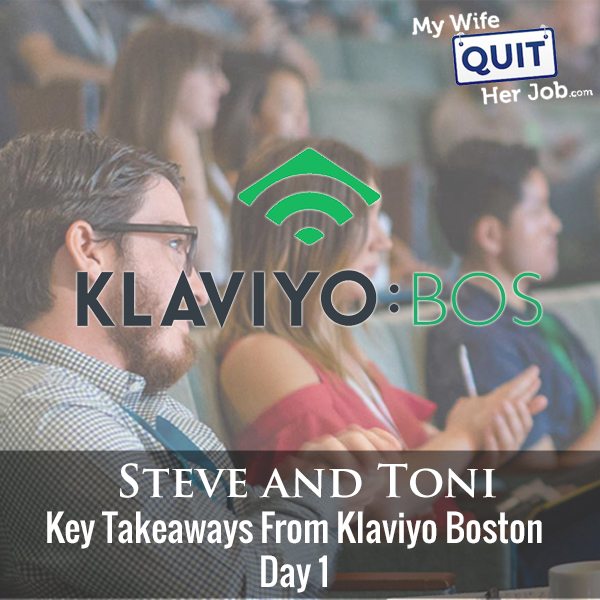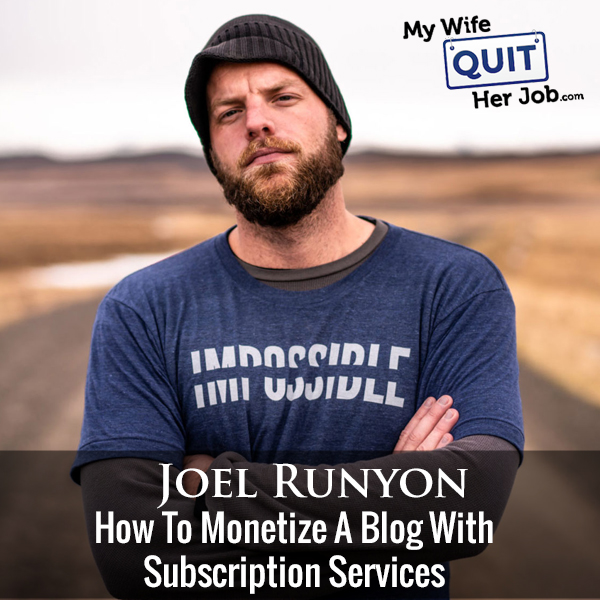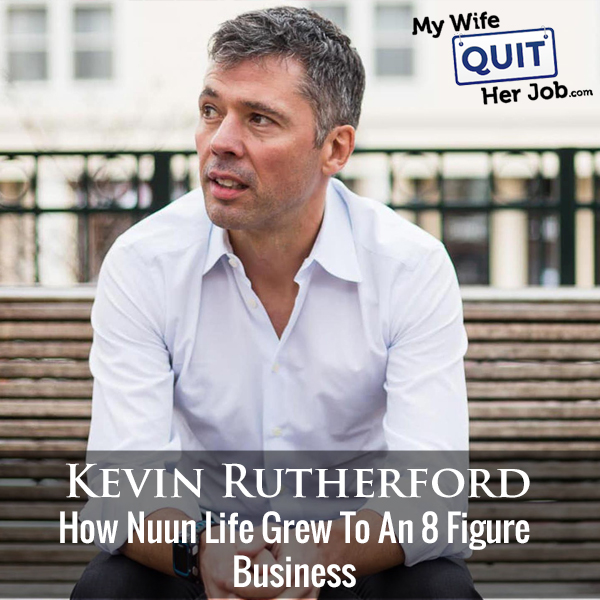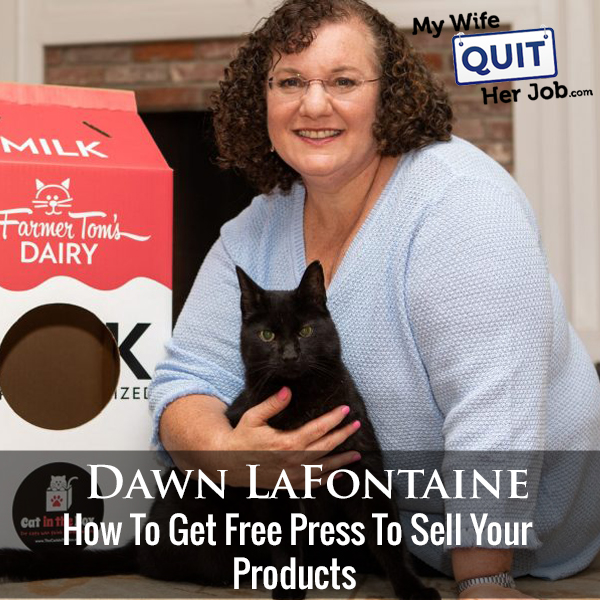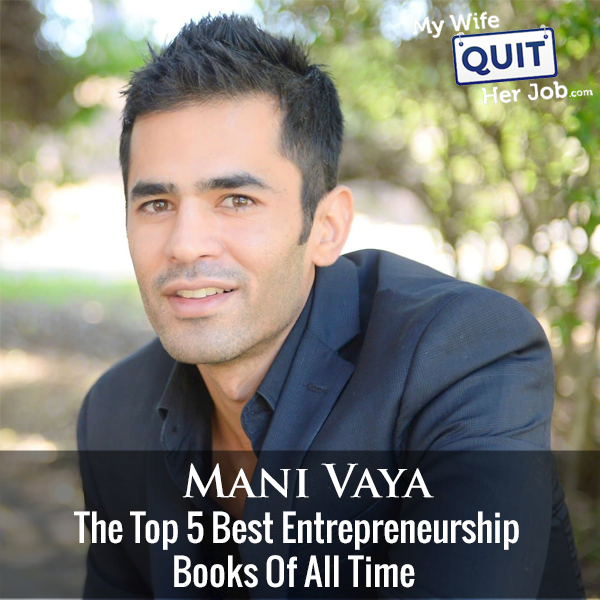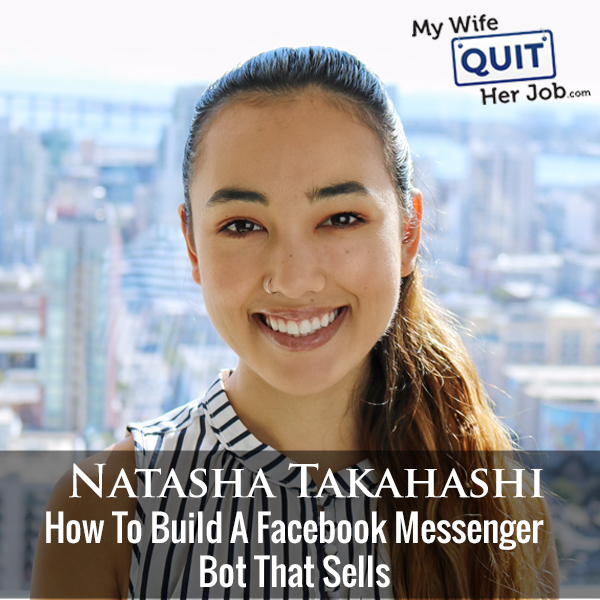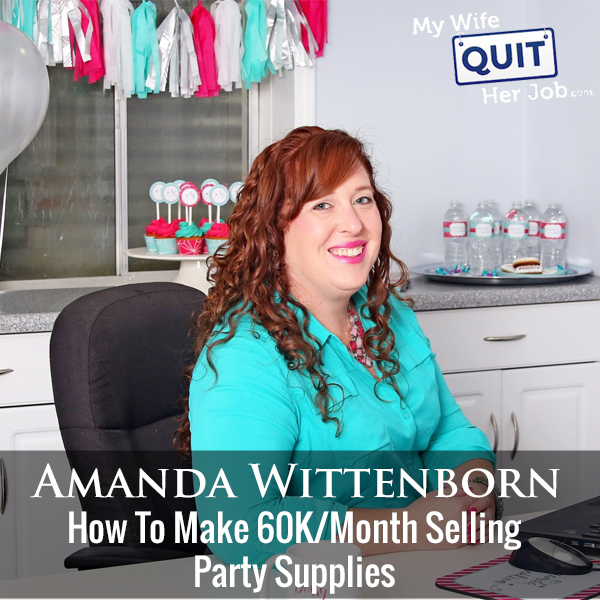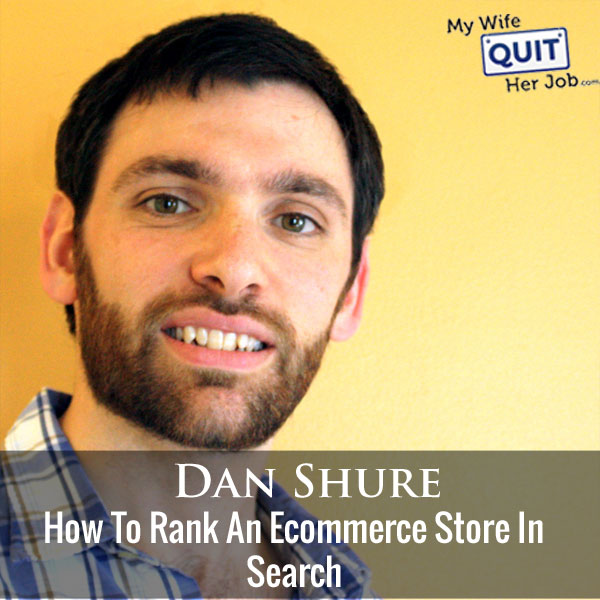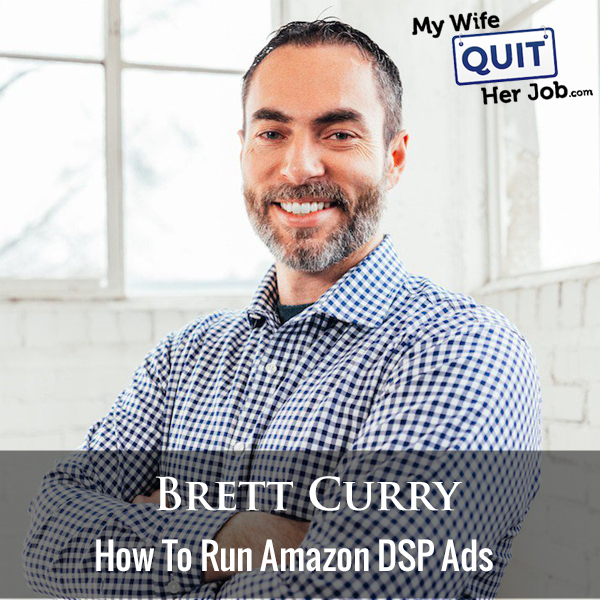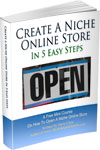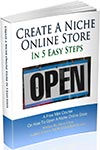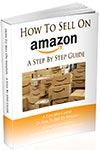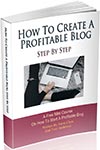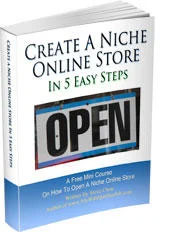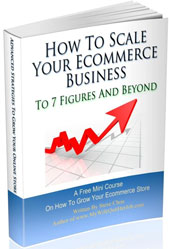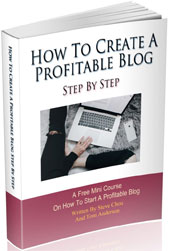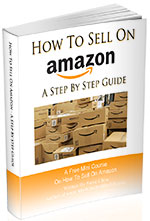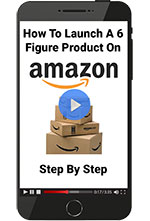Podcast: Download (Duration: 45:50 — 52.7MB)
Today, I’m thrilled to have my friend Michelle Schroeder Gardner on the show. Michelle started out with over $40K in debt and hustled her way to becoming a millionaire by starting her blog MakingSenseOfCents.com at the age of 22.
Today, she earns over 100K per month from blogging through affiliate marketing and teaches a popular affiliate marketing course.
What You’ll Learn
- How Michelle makes money through her blog
- How much time she spends blogging every week
- The challenges of running a blog
- The best places to find affiliate offers
- How to track affiliate sales and the top affiliate platforms
Other Resources And Books
Sponsors
Klaviyo.com – Klaviyo is the email marketing platform that I personally use for my ecommerce store. Created specifically for ecommerce, it is the best email marketing provider that I’ve used to date. Click here and try Klaviyo for FREE.
Privy.com – Privy is my tool of choice when it comes to gathering email subscribers for my ecommerce store. They offer easy to use email capture, exit intent, and website targeting tools that turn more visitors into email subscribers and buyers. With both free and paid versions, Privy fits into any budget. Click here and get 15% OFF towards your account.
EmergeCounsel.com – EmergeCounsel is the service I use for trademarks and to get advice on any issue related to intellectual property protection. Click here and get $100 OFF by mentioning the My Wife Quit Her Job podcast.
SellersSummit.com – The ultimate ecommerce learning conference! Unlike other events that focus on inspirational stories and high level BS, the Sellers Summit is a curriculum based conference where you will leave with practical and actionable strategies specifically for an ecommerce business. Click here and get your ticket now before it sells out.
Transcript
But before I begin I want to give a quick shout-out Privy who’s a sponsor of the show. Privy is a tool that I use to build my email list for both my blog and my online store and right now I’m using Privy Display a cool Wheel of Fortune pop-up basically user gives your email for a chance to win valuable prizes in our store and customers love the gamification aspect of this and when implemented this form email signups increased by a hundred thirty one percent. Now, you can also use Privy to reduce car abandoned with cart saver pop-ups and abandoned cart email sequences as well one super low price that is much cheaper than using a full-blown email marketing solution. So bottom line Privy allows me to turn visitors into email subscribers and recover lost sales so head on over to privy.com/steve and try it for free if you decide you need to the more advanced features use coupon code MWQHJ for fifteen percent off once again that’s privy.com/steve. Now on to the show
Steve also want to give a quick shout-out Klaviyo for sponsoring this episode. Code Black Friday is right around the corner and for my e-commerce store email marketing is a heavy part of my holiday sales strategy. And in fact last year, it was close to 50% of My overall sales. And of course as you all know klaviyo is the email marketing tool that I use for Bumblebee Linens now Klaviyo is the growth marketing platform chosen by over 20,000 Brands generating more than three point seven billion dollars in Revenue in just the last year and with the holiday season right around the corner klaviyo has created the ultimate planning guide for crushing those holiday Revenue targets for marketing creative to segmentation strategy. These are proven tactics for more personalized marketing, especially in time for the holiday season. To get ahold of this guide, visit Klaviyo.com/mywife. Once again, Klaviyo.com/mywife.
Intro: Welcome to the My Wife Quit Her Job Podcast we will teach you how to create a business that suits your lifestyle so can spend more time with your family focus on doing the things that you love. Here’s your host Steve Chou.
Steve: Welcome to the My Wife Quit Her Job Podcast. I’m thrilled to have my friend Michelle Schroeder Gardner on the show. Now, Michelle is someone who I met a while back at Fincon and I’ve always been impressed with what she’s managed to accomplish at such a young age. Now Michelle started out with over 40,000 dollars in debt and hustled her way to becoming a millionaire by starting her blog making sense of sense at the age of 22 and today, she earns over a hundred K per month from blogging. Now, specifically Michelle specializes in affiliate marketing and teaches a very popular affiliate marketing course called making sense of affiliate marketing and today we’re going to learn more about her story and how she managed to grow such a profitable blog. And with that, welcome to show Michelle, how are you doing today?
Michelle: I’m good. Thanks so much for having me today.
Steve: So Michelle, I can’t believe it’s taken me so long to have you on the show. So for the people who are listening that do not know your background. Give us the quick story about how you got the idea for starting making sense of sense.
Michelle: Yeah. So I started making sense of sense in August of 2011. This month is actually my eight months bloggerversary. And I started my blog just
Steve: Eight years.
Michelle: Eight years, Yeah, it started all just like on a whim like I didn’t start it to make money or to like be featured anywhere or anything like that. I literally had no idea what a Blog was or anything like that. I was reading Cosmopolitan magazine one day and in it, they feature the personal finance website daily worth and I started reading that and eventually I started reading the comments to see what like how people were doing with their financial journey and like comparing myself to them and stuff like that. And I learned that a lot of them actually had personal finance blogs and it all just quickly started from there. I started my own blog. It was Anonymous. Like I said, I had no plans to make money or anything like that. It was entirely for me just like a new writing Hobby and it all just quickly grew from there.
It’s really funny to think about because like when I was in high school or middle school or whatever, College, I had no interest in writing if my English teachers knew that I was writing for a living now. I’m sure they would find it just like odd, so it’s really funny to think that I’m blogging full time now. I actually went full-time in October of 2013 and have been blogging ever since.
Steve: I think we have a similar story. I used to really hate writing when I was younger. And so it was a complete shock to my parents when I told him that I started blogging also and they’re like you don’t even write.
Michelle: Yeah
Steve: Well, it’s a means to an end, right?
Michelle: Yeah, exactly.
Steve: Just curious. Do you still write all of your posts or?
Michelle: Yeah, I still write all of it. I have an editor who helps like make it flow better and corrects things and stuff like that, but I right 99% of what’s in a blog post.
Steve: And I’m just curious, what made your blog initially take off. Do you know?
Michelle: So I’ve always been told that I write in a slightly different way than most Financial blogs. I write like I’m talking to a friend. So I feel like that has really helped me over the years because I have a lot of readers who say like, it’s more relatable. It’s more personable. It’s easier to understand and stuff like that. And I think that has really helped my blog post take off.
Steve: So in the beginning, were you collecting emails and that sort of thing or were you just, just kind of writing and people were just, how are people finding you in the very beginning actually?
Michelle Oh, yeah, so I wasn’t really doing much to earn traffic. Back when I first started my blog. It was mainly just me interacting with other bloggers and readers mainly through like comments and emails and stuff like that, but I didn’t have like an actual email list until, I didn’t really start to focus on it until like creating making sense of affiliate marketing and that’s when I switched to convert kit and stuff like that. So that was around like 2016. So I went a good five years without really doing anything for my email list.
Steve: So you mentioned that you went full time. I think was it like two years after you got started was it or two or three years?
Michelle: It was like 2 years and 2 months.
Steve: 2 years and 2 months. Okay, so you just mentioned that you didn’t start email until much later. So was it making money in the beginning within those first couple of years?
Michelle: Yeah. So the first couple of years I was earning money in a slightly different way on my blog than I am right now. So I back then I was earning money like through so many different ways social media management for other websites, staff writing. I did a lot of like sponsored posts a tiny bit and affiliate marketing. Lots of display advertising and stuff like that. So it was like what really well-rounded but I quickly realize that like for me I didn’t really find joy in social media management or staff writing for other blogs and stuff like that.
So in 2015, I actually fired all of my clients every single one and I started like purely focusing on making sense of sense and that included like finding ways to grow my traffic through Pinterest, Facebook, Facebook group stuff like that Twitter and my income, I think it like tripled like a month after I fired everyone and actually just started focusing just on making sense of sense.
Steve: Were people finding you through the blog though for those Consulting gigs, I guess?
Michelle: Yeah. That’s actually how will everyone found me. I had like a higher me tab on making sense of sense.
Steve: Okay, and then you just kind of hustling it on social media. I guess where your ranking in search at the time?
Michelle: Not a ton just a little bit. But..
Steve: Okay, and I would imagine firing all of your clients was kind of stressful. Right? Was that a hundred percent of your income at the time?
Michelle: No, but it was like a good chunk for me to feel comfortable with working at home. It was definitely stressful to fire all of them. But I think I like did it all in like one to two days. I gave them all of course a little bit of notice and I continue to work for them until like they were comfortable or until they found a replacement. But for the most part it was really really nice. Just getting rid of all those clients and having a much more flexible schedule.
Steve: Just curious. Where you working full time when you started your blog or?
Michelle: yep. I was working full-time as a financial analyst.
Steve: Okay. All right. So this is all coming together now and when did you actually quit your job?
Michelle: I quit my job in September of 2013 or maybe October.
Steve: Okay. So when you fired all your clients, you actually quit your job as well.
Michelle: No, I fired all my clients in 2015.
Steve: Oh 2015. Okay
Michelle: Yeah, it was about like a year and a half later.
Steve: Got it. Got it to on 13 is when you actually went full-time with it got it.
Michelle: Yep.
Steve: And so what are all the different ways that you make money currently?
Michelle: So now the main ways I make money is mainly making sense of sense and making sense of affiliate marketing. I earn a good chunk through my blogging course that I started in July of 2016. And then of course the other good chunk is through making sense of sense and that’s through affiliate marketing sponsored Partnerships and display ads.
Steve: Okay, and then so making sense of sense is like an Finance blog. So what can you just give us an idea of who your affiliate partners are? And actually if you wouldn’t mind just kind of Define Affiliate marketing for some of the listeners who might not know what that is and then just kind of how you get these affiliate Partnerships established?
Michelle: Yeah, definitely. So affiliate marketing for me on making sense of sense. I will promote something on my blog. So something I really like to promote is like, something easy to be like the instapod like I use it every single day. So it makes sense that I would promote it to my readers and I might include a link in a recipe Roundup post or something right to talk about the instapod and then if a reader buys something from Amazon or the instapod specifically through me I will earn a commission. The commission rates really depend on the company and the product, Amazon is usually super low but other products such as like an online course could be as high as like 40 60 percent.
So affiliate marketing is really great because since I do travel full time, I am able to earn an income when I don’t have internet when I’m sleeping when I’m out sailing or something like that. So it makes it more possible for me to travel full-time because I’m earning more of a passive income.
Steve: So you can’t do affiliate marketing effectively, unless you have traffic right? So what would be some of your advice for someone just kind of starting out in this blogging game? Like what is the order that you should be doing things in?
Michelle: So I’ve talked to people who have had success In all different types of orders. So I mean some people they might start with affiliate marketing right away and they’ll say success others might have to wait six eight months or whatever. I always tell people to First focus on like first start your blog and you can learn about affiliate marketing at the same time so that you don’t have to like go back and change everything of course because once you learn like the fundamentals of affiliate marketing, it’s like super easy. You just like apply it really quick and it doesn’t have to be like a huge like strenuous task.
Steve: Can we talk about some of those fundamentals if you wouldn’t mind?
Michelle: Yeah for sure. So number one. I always tell people like affiliate marketing is not as easy as just like slapping a bunch of affiliate links on like your social media page or on your blog or whatever. Like I see that all the time people will just be like hey bty this instapod and Like literally the whole blog post. That’s all it says, but no you actually have to like think more about your readers something that I talk about on making sense of sense won’t always work on your own blog. So I get that a lot like people say like, oh, I’m promoting all the same things as you but it’s not working on my blog and I go read their blog and their Blog has like nothing to do about money Finance or anything like that.
So first you want to think about your readers. What do your readers want to read about? What are you an expert in? What do you like to talk about? What do you actually use? So I mean what I promote won’t always work for everyone else you want to do like your own survey your own research and see what actually works for you and your blog.
Steve: So you mentioned some people start out with an affiliate marketing first and then worry about traffic. What do you recommend? Do you recommend figure out what you want to promote first and then writing the content around that or just writing the content first and then just naturally looking for affiliate partners for products to promote.
Michelle: So that really depends. Usually there’s like an affiliate product or something related. Or something kind of similar for almost anything. So it’s usually pretty easy to find something. So it really just depends on what you want to do for me that all of my blog posts are affiliate related. So I might write and then a year later I might realize oh, there’s like something I could easily place in here. So for me, usually I about I want to say two-thirds of my content is like not affiliate related at all. And then the other third is like easily. I can easily place an affiliate Link in it.
Steve: And how do you decide whether, when you write a post? Is it for the intention of making money with affiliate marketing for that 1/3, I guess that you mentioned.
Michelle: No, not really. It just kind of naturally happens because when you’re writing about something there’s almost always something that you’re probably talking about that you can easily promote that someone’s probably interested in because when you’re writing a blog post, you’re probably answering some kind of question. So I mean like what’s the best budgeting app or something like that? And you’re just naturally talking about budgeting or whatever and so just should easily align and that’s why I always recommend for a writer like when you’re writing an affiliate blog post.
It shouldn’t be like a pure advertisement a hundred percent of the time unless that’s like your kind of blog or whatever like you have a review blog, but for the most part it should be a helpful blog post that actually helps your reader and makes a want to come back for more.
Steve: So, can you give us an example of a post on your blog that you didn’t really have any intention of making an affiliate post or not? And then how did you find an offer that went along with that post?
Michelle: Yeah, so like for one blog post I just talked about like, let me think.. like I talked about like work from home stuffing a lot. So I remember what a blog post I talked about like work from home scams and it’s like what can you really promote in there? And one of my Affiliates actually had a, like a freebie principle that talked about that went more in-depth on work from home scams and through that I was able to promote that and I was able to get leads into her product and that helps me to promote. Product and sell it easily year. Once my readers understood who I was selling and stuff like that because you want to introduce your readers to your affiliates as well.
Steve: How did you find that affiliate? That one sounds a little bit random. It’s not like a company right sounds like an individual?
Michelle: It’s individual. It’s an online course.
Steve: Okay, and it how did you find this person? Is there like a central database to find, find people like this?
Michelle: So for smaller companies like that? I don’t really know of anything but there’s a definitely a lot of affiliate marketing networks out there. Where you can find like just tons of different affiliate offers, of course, and that’s a great way for a new blogger to start another way to start is I always recommend if you think that there’s an affiliate product or something just go to Google and type in product name, plus affiliate product or affiliate program or something like that and there’s almost something that pops up.
Steve: What are your favorite affiliate networks where you can easily just find lots of companies?
Michelle: So I don’t use affiliate networks as much as I used to to find companies. I usually just do the google thing, but some of my favorite ones are definitely like CJ.com I use impactradius a ton. I would probably say oh and shareasale. Those are the top three that I use.
Steve: Are there any differences between the three that you can comment on?
Michelle: They’re all pretty similar. I would say the most like user-friendly would be impactradius.
Steve: Okay, and so in general, I guess you don’t really care as long as they have the company that that you want to promote.
Michelle: Yeah, and I of course I’m not going to name like the affiliate networks that I don’t like so I don’t want to like get in trouble or anything like that. But I mean you definitely want to make sure that your affiliate managers are great that you can trust the tracking system because sometimes like the tracking might be bad. It may not track any clicks or anything like that the system may go down a lot. So you definitely want to make sure that you can trust the affiliate Network that you’re a part of. Those three that I mentioned. I have I don’t think I’ve ever had a problem with any of them.
Steve: How do you know whether your clicks aren’t getting tracked?
Michelle: So the other day I actually logged in to one of the, one of the affiliate networks on my part of it. It’s not any of those three and it was a new product that is just started promoting and I was receiving about I want to say it was like $400 $500 a day through these leaves that I was generating for him and I like just started promoting them. So I was regularly going in and checking every few days to see if it was working since it was brand new and so for the first 12 to 13 days, it was working perfectly. Everything was normal, too. Seemed like a good amount of clicks and then I went like 10 days without checking because I had no internet and those exact 10 days there were exactly zero clicks.
So I mean if I wouldn’t have checked, I don’t know how long that would have lasted but I emailed my filling manager and he said yeah, something’s definitely broken. I’m glad you checked it. So, I mean you definitely want to check something like that too. So if you notice like there’s a steady stream of clicks, then all of a sudden it goes down to like zero or half or something. It’s a good chance that it’s technical related.
Steve: So I would imagine you work with a lot of companies in their affiliate programs. Is there like some sort of methodology that used to keep track of everything because I would imagine like if there were certain offers where the traffic wasn’t getting counter what not be hard to keep track if you were if you had like 40 or 50 offers outstanding for example.
Michelle: Yeah, definitely so I’m kind of old-school. I just like an Excel sheet and I just go in like once a month usually or once every few months and I just go in and check and whenever there is an issue. Which isn’t very often usually you can just reach out to your affiliate manager and pointed out to them and almost every single time. They’ve just taken an average from what it was working and use that average or if I think it’s been higher such as like if that blog post went viral or something and I realized it wasn’t working. I usually just pointed out and we just come up with like some kind of calculation to make it like more equal for me.
Steve: Okay, and then do you ever run ads to your affiliate Pages or is it just purely organic?
Michelle: So I’ve done some Facebook ads. Ads to like my freebie courses, but I haven’t really done a ton of anything. I’m actually in the process of learning more about improving my Facebook advertising strategy. And then I also want to take like a Pinterest advertising class too.
Steve: Okay, so it sounds like it’s mostly organic and you’re running Facebook ads, but that sounds like it’s a lead gen for your course. Is that correct?
Michelle: Yep. Exactly.
Steve: Okay. So if we were to break down your traffic like, where are you getting most? Like, what are your top three traffic sources?
Michelle: Facebook Pinterest and organic SEO. Yo, but I also I guess direct referral would probably be number one. So I guess that would be the top four.
Steve: Okay, and so when you say Facebook, it’s Facebook organic, right?
Michelle: Yeah, like face my Facebook page or my Facebook groups?
Steve: So given that Facebook’s reach has just drastically decreased over the years. I found a little surprising that you get most you try from Facebook. What are you doing? To gather that traffic.
Michelle: So I’m pretty active on my Facebook page. I post I actually just lowered it the other day from like 5 posts a day to about 2 to 3, but I’m usually pretty active on their, ask a lot of questions not everything is a link. So I think that really helps with my engagement on there. And then I also have one Facebook group for making sense of sense. That’s like a free community group and I post a link to something. I’m making sense of sense pretty much every single day. So with those two things, it’s actually not too. Hard to get traffic the Facebook group definitely generates a lot more traffic these days than it used to
Steve: So you mentioned two things like a page and a group which one actually works better. Like why not make, making sense of sense a group instead of a page?
Michelle: So the group lately has been a lot better than the page the pages traffic has kind of died down and I think that’s because groups are just more popular these days and you’re kind of fight, when it comes to a page your kind of fighting with Facebook ads and stuff but with my group all my readers can like join in talk to each other and stuff like that. So, of course, there’s going to be more engagement since people are actually engaging in creating their own threads and stuff like that.
Steve: Okay, and can you give us an example of some of the posts that you might post on your page in or group to generate engagement?
Michelle: Yeah. So I mean, I post pretty similar things but in the group people tend to comment more so on either, it’s usually just like a link to a recent blog post or might be a link to like a really old blog post. So I mean that’s Easy and then the caption is usually just like a question. So if we like the other day really popular guest post on my blog was why me and my husband have separate finances and it wasn’t something I wrote or something a reader wrote. So the question on that was would you have separate finances with your spouse and that generated a ton of Engagement either people who are pro or against it. So that really helped generate like more traffic more engagement stuff like that, but then there’s also a lot of days where I just post simple questions with no links and that’s simply to like increase discussion in the group and around the page.
So like I might just ask like would you have separate finances with your spouse or whatever but no link at all. So and I find that those really help without a link.
Steve: Yeah, that makes sense and everyone has an opinion on that also, so it generates lots of discussion.
Michelle: Yeah. It’s definitely a debatable topic.
Steve: Do you schedule all these out or do you just kind of do it on the Fly?
Michelle: I almost always schedule them out. But if I think it’s like a really good question on the spot usually adds. Just like to ask it right away to see what people think because it also helps me like think of new blog posts and new things to talk about.
Steve: Do you use any of those social media Auto posting software?
Michelle: Yes, so for my Facebook page, it’s just I just schedule right on Facebook locked in my virtual assistant does
Steve: Okay
Michelle: But my Facebook group, I guess that’s just scheduled right in there as well. But for Twitter that’s on HootSuite and then by making sense of affiliate marketing Facebook group that’s on HootSuite as well.
Steve: Okay. Is there a reason why you would use HootSuite versus the Facebook scheduler?
Michelle: No, not really. I really don’t know why I went that way I just did.
Steve: Okay, no worries. And then you mentioned Pinterest as another source. So what are some things now that you’re doing to generate Pinterest traffic?
Michelle: Yeah, so I actually have simple pen media managing most of the scheduling for Pinterest for me, but I do have like me you’re my virtual assistant going in and pinning more organically.
Steve: I’m sorry, What something what is simple pin media?
Michelle: Pinterest management company?
Steve: Okay. Okay.
Michelle: But she’s really awesome. I don’t how many employees she has but the whole group is really awesome and they helped me improve my Pinterest page. And so the main thing I’m doing right now on Pinterest is I’m having my virtual assistant go through and updating all the graphics and I found that that has really helped to keep fresh content on Pinterest. So I definitely recommend that more people start doing that.
Steve: So outside of the tall and skinny format. What does it mean exactly to update an image?
Michelle: Might just have my virtual assistant go in and create a brand new image. That might be like new wording a new question a new caption or something on it. But mainly it’s the picture should be different so that it’s completely different from the other one and then Pinterest can kind of recognize that there’s a new updated image and lately that has been really been helping and I’ve noticed that more people have been saying the same thing as well. So usually when I publish a blog post in the past, I would only create one image and that would be like my one image forever. But lately I’ve been having my assistant go in and once a week she goes in and updates like five to ten images or five to ten blog post eachweek and that has like really really helped.
Steve: Interesting. So by update you mean remove the old one and add a new one.
Michelle: Yes, Yep. Some people will leave them both and like kind of A/B test them, but for me, I’m just kind of removing the old one and improving it because of course things change over time. Some of my Pinterest images are like 5 years old, so..
Steve: If you sell an Amazon or run any online business for that matter, you’re going to need a trademark to protect your intellectual property. Not only that but a trademark is absolutely necessary to register your brand on Amazon. Now, I used to think that any old trademark registration service would work and that could even try to register my own trademark by myself on the cheap, but I was dead wrong. Securing a trademark without a strategy in place usually results in either an outright rejection or a worthless unenforceable trademark. Now, that is why I work with Stephen Wagner and his team from Emerge counsel. They have a package service called total TM, which provides the same attention to detail and process that large law firms do at a fraction of the price. Now for me personally, I like Emerge Council because of their philosophy, their goal is to maximize IP protection while minimizing the price. So before you decide to register a trademark by yourself or file for other I could protection such as a copyright or a patent, check out Emerge counsel first and get a free consult. For more information go to emergecouncil.com and click on the Amazon sellers button and tell Steve that Steve sent you to receive a $100 discount on the total TM package for Amazon sellers. Once again, that’s emergecounsel.com over at emergecounsel.com now back to the show.
So is Pinterest like very consistent like you’re getting a lot of traffic to one post? Does that traffic tend to linger like Google?
Michelle: It’s actually pretty consistent for me. So like I have a blog post 75 ways to make extra money and I can remember when I publish it was probably five years ago or something for years ago. And that is still one of my top Pinterest referrals and I found that usually that it’s the same things like month after month edit generate traffic for me through Pinterest.
Steve: And then the post at you Taking the images on those I would imagine get less traffic and you’re just trying to jump start it?
Michelle: Yeah, definitely. So usually I have her my virtual assistant like update the blog post that aren’t doing as well to see if maybe a new image will help it perform better.
Steve: Yeah. So, you know, I’ve actually tried Pinterest for my Niche which is e-commerce and it does okay, but it seems like there’s limits. There’s certain posts that you focus more on for Pinterest or do you just put Pinterest images for every single post at you, That you post?
Michelle: So I have a Pinterest image for probably 99.9% of the blog post I had. When I first started on Pinterest I was probably one of the First Financial bloggers on there and I had a ton of people tell me like, oh that’s a huge waste of money people on their only care about like clothes and food and stuff like that. So but I was using Pinterest at the time and I was a really regular user and I figured why not just try it and I think that actually like really helps give me a leg in the game because I was one of the only financial bloggers at On there. And yeah, that’s just really helps me over the time and people always tell me another thing that I want to mention is like, oh like men aren’t on Pinterest and stuff like that.
But I recently read a stat where it’s like 35 or 40 percent of Pinterest users are actually men. So I made a few think like, oh like my niece doesn’t fit or whatever. I definitely recommend still trying it especially since of Pinterest image doesn’t really take a ton of time to make.
Steve: if there is like a couple tips that you might share for someone just starting out with Pinterest. What would you suggest?
Michelle: The number one tip is to create a Pinterest image for every single blog post.
Steve: Okay.
Michelle: Definitely. It’s doesn’t take very much time. Just one make take, if you just create like one image. It may take like 5 to 10 minutes max. So, I mean, it doesn’t take it doesn’t have to take a ton of time to definitely make sure your images are always long horizontal images do not do well on Pinterest at all. I’ve always heard never to use faces on Pinterest unless you’re like a fashion brand or something that like that a clothing brand usually faces or stock photo images don’t really work as well.
So, I mean you want it to like blend in but kind of stand out on Pinterest. So I always recommend like looking to see what is doing. Well like on your home popular feed that’s always a good tip or see like what other people like in your industry or doing as well. So if you see another personal finance while you’re doing really well on Pinterest definitely see like what they’re doing what’s working for them.
Steve: Interesting so you don’t use any stock images?
Michelle: I do use stock photo, stock images, but I don’t like use like the normal cheesy ones that people tend to use
Steve: Okay, this is going on..
Michelle: Yeah.
Steve: We’re like Jeff Rose is a couple of him holding like Lumber is right.
Michelle: I seen this.
Steve: Okay, and then what about pinning strategy?
Michelle: So for me like mainly simple pin media managers my pinning strategy, but it’s pretty similar to what I’ve always done in the past. It’s nothing crazy, they pin for me like 20 to 30 times a day. It’s usually I think it’s like 60% my blog post 40% other people’s blog post. So I mean you don’t just want to pin your own content and you don’t just want to pin the same blog post over and over again because that comes across as spammy and that I mean that doesn’t look normal. So I mean you’re pinning strategy really depends on you. I know people who pinned 200 times a day and generate a ton of traffic. I know people who pinned like two times a day and generate a ton of traffic, so it really just depends on like finding your own little strategy.
Steve: So I know for me and I know blogs is going to be different but the traffic that I do get from Pinterest is amongst the lowest converting at least the way I measuring that is by email subscribers. Is that similar for you or in terms of just traffic value or is Pinterest like a really high traffic value source for you?
Michelle: I think that’s pretty normal. I think Pinterest is more like about the numbers like hopefully you can generate more people coming to your blog and hopefully like that will help you. Even with a lower percentage. Hopefully that’ll help you like turn them into subscribers and stuff like that. But I think in general Pinterest is like a high bounce rate group, but I still have found that I found like soup like a ton of really loyal readers through Pinterest.
Steve: Okay, and then I think you said that third prong is SEO and it sound like when you first started out you were just writing whatever has that changed over the years?
Michelle: So I’ve never really written for SEO. That’s just not really something I’ve ever done in life, but recently I started taking a a new SEO course my I’m hoping to dedicate more time towards that area right now SEO actually generates like a lot of traffic for making sense of sense. And that’s with like almost no effort towards it. So I think if I start spending time on it, I can definitely start generating more traffic with it.
Steve: Okay. So you’ve never done any link building guest posting that sort of thing. It’s just all been kind of organic?
Michelle: I’ve never done any purposeful link building or anything like that. No.
Steve: Okay. Cool. Now let’s talk a little about your course. So if someone’s like brand-new and they want to make well first of all, what do you think is realistic in terms of what you can make in a year. Let’s say..
Michelle: With affiliate marketing?
Steve: Yeah.
Michelle: So it really depends what the person I’ve had people take my course and they tell me oh two days later. I made a hundred dollars and that was like five days into my blogging career or whatever. Then I’ve also had people say like oh six months and I haven’t really made anything yet. Like what am I doing wrong? So I mean, I think it really depends on the person. Whether they’re really getting blogging and the amount of hard work that they’re putting towards it.
Steve: Sure.
Michelle: So I always tell people like if you’re a brand new blogger the average blogger quits like six months in and so it’s always like getting past that hump figuring out what’s wrong, taking the courses that you need, asking for feedback. So one of the things in my making sense of affiliate marketing group is I have people come in and you can start a new thread and ask like, oh what’s wrong with this affiliate marketing post. So I always recommend that people do that because there’s almost always like some crazy like obvious mistake that people are making but in the end the amount of money that you can make like really varies for me. I’ve earned around 50,000 to 60,000 a month like pretty consistently over the past three four years, I think.
So, but I mean, it really just depends on the person how much traffic they’re generating if they’re taking their email list seriously and stuff like that. I don’t think there’s like any perfect number that I would want to give out because it just depends on so many variables.
Steve: So for someone just starting out obviously, the first step is to write really good content right?
Michelle: Your content definitely matters. Yeah.
Steve: So what are just some pieces of advice that you give someone just starting out with with even how to write?
Michelle: Yeah. So like I said earlier like my English teachers would laugh at me if they found out like I was a full-time writer. So I mean, even if you think you’re a really bad writer, but you like want to give a Blog a try. I definitely recommend trying one you just never know where it will lead to but the top tips for like a really good blog post. One, would probably be make sure it’s long. So some people who start a new blog including me. I wrote a lot of blog posts are like 200 to 300 words at a
Steve: Yeah I wrote a bunch too.
Michelle: Yeah those do nothing like for the most part. I can’t think of very many blogs where I rate of 200 blog, 200 word blog post. I’m like, oh, wow, I really learned a lot from that. So you definitely want to make sure it’s long the average blog post a mine is anywhere from around 1500 words to around 5,000. So just this past week I wrote Two blog posts that were 5,000 words long so you definitely want to, you don’t they don’t all need to be five thousand words, but I mean try to make it at least around 750,000 words to really make it meaningful.
So you can actually help your readers and then that goes into to make sure you’re actually helping your readers with your blog post. That’s a definitely a big thing with your article. You should be helping them answer their questions helping them answer their issues problem solving. And just being like really engaging you want your content to be fun as well. But it really just depends on what kind of blog you have. That depends on how you write.
Steve: How long did it take you to write that 5,000 word post?
Michelle: Lately, I’ve been a lot faster than usual. It really just depends. So I have a real in Life or only work when I want to and that really helps with my writing. So I do enjoy writing but I don’t do well when I force it if I force writing a blog post, I mean it might take me like weeks to write one. But if I’m like really in the mood, I mean I could write it definitely and just a couple of hours.
Steve: Wow. Okay, if I told my kids that they could just work whenever they felt like it they would never work but so in terms of this writing so does that imply that you don’t post every week? Do you post like twice a month or?
Michelle: so I always try to work in advance because of what I just said since I’m not always in the writing mood. I mean I might go a month or two where I don’t write it all and then I might go a month write like 30 blog post. I mean it really just depends and that’s the number one thing. I always recommend for people when it comes to you like creating a schedule having a lot of blog posts and stuff like that. When I first started making sense of sense, I would literally write my blog post the night before I would publish it and I did that for probably I don’t know, two three years maybe but lately I like to be around two to three months in advance and that’s not just because it’s for multiple reasons because I’m not always in the mood to write or sometimes like I write a ton.
But also because of lack of Internet issues. I don’t always have internet So if I’m two to three months in advance, I don’t have to like frantically run around and try to find internet.
Steve: So two to three months in advance. How many posts does that equal?
Michelle: Yeah, I so I usually right around two to three times a week. So what does that probably like 10 a month? So about 20 blog posts.
Steve: Oh my goodness. Okay. So you put out two to three posts a week. You said
Michelle: Yep
Steve: My goodness and each one of those are at least 1,500 words?
Michelle: almost, always. So I actually came up with that idea. I can’t remember what blog post I was reading but it was when I first became a full-time blogger and she said that she had a one year full of blog posts ready like an scheduled.
Steve: Wow.
Michelle: And I just thought that was insane but I was like that’s a really good idea.
Steve: It sounds crazy to me. But can we talk about the writing process? So you pump something out and then you have an editor just kind of make it presentable or?
Michelle: yeah, so I just write the blog post and then I handed over to my editor and I usually give her like a few like requests like hey, can you fix the intro a little bit. It doesn’t seem to like make a ton of sense to me or can you make sure this flows better or stuff like that. And usually she spends like an hour or two fixing a blog post and it’s actually quite affordable. So I recommend that more people get editors or proofreaders or something like that. If you find that you’re struggling making your post better.
Steve: I just want to let you know that tickets for the 2020 Seller Summit are on sale over at sellersummit.com. Now what is seller Summit? It is the conference that I hold every year that is specifically targeting e-commerce entrepreneurs selling physical products online and unlike other events that focus on inspirational stories and high-level BS. Mine is a curriculum-based conference where you will leave with practical and actionable strategies specifically for an e-commerce business. And in fact, every speaker I invite is deep in the trenches of their e-commerce business entrepreneurs who are importing large quantities of physical goods and not some high-level guys who are overseeing their companies at 50,000 feet. The other thing I can assure you is that the Seller Summit will be small and intimate every year we cut off ticket sales at just a couple hundred people. So tickets will sell out fast, and in fact, we sell out every single year many months in advance now if you’re an e-commerce entrepreneur making over 250K or 1 million dollars per year, we are also offering an exclusive mastermind experience with other top sellers. Now, the Seller Summit is going to be held in Fort Lauderdale, Florida. From May 6 to May 8. And right now, we are almost sold out of Mastermind tickets already and I will be raising the ticket price regularly starting the day after Cyber Monday for more information, go to sellerssummit.com. Once again, that’s SELLERSUMMIT.COM or just Google it. Now back to the show.
Interesting. May I ask like what the ballpark would be for an editor?
Michelle: Yeah, so I actually at one point had a proofreader. I started with a perforator and I can’t remember exactly how much it was. But I think it was like $10 a blog post and that was actually the going rate for proofreading back then and then but then when I hired my editor she charged dollars an hour and that was for like more like grammar and stuff like smaller things like that. But now as an editor, she’s mainly making things flow better. She like add sentences sometimes paragraph stuff and stuff like that and it takes about sometimes it only takes like 20 minutes to do a blog post for her and sometimes it takes one to two hours. So I made it really varies on how much it actually costs.
Steve: Sure and how long the post is I would imagine.
Michelle: Yeah, definitely
Steve: So I know a couple people what they do is when they write a blog post they’ll just talk and then they’ll have someone turn that into a post. Are you at your laptop or whatever just typing, haha that’s a weird question. I know. so you write all of your posts out, when you’re first writing in the blank screen are you just trying to get all of your ideas out and then you turn that over to your editor or do you actually do a good amount of proofreading first?
Michelle: I usually do a good amount of proofreading and make sure it makes sense and see if I have to really add anything. So it’s usually pretty easy. So I usually start off with I have a notepad on my computer and I have a ton of different blog post of blog post ideas. And I usually have like bullet points right next to it that talks about the things I want to talk about. So it’s usually really easy to transfer onto a blog post because it’s all like there’s Good template for me to follow already.
Steve: what percentage of the post that you write since you are quite prolific what percentage of these posts actually generate traffic significant amount in your..
Michelle: Okay, that really depends. So for the first week, they almost always do well so I pump them all out to like my email list.
Steve: Okay.
Michelle: And but after that I would say, I don’t know. I’ve never really done that math, but my top blog post are usually like my top 10 and they’re usually pretty consistent. So I would say like, I don’t know I probably have 2,000 blog post and tent and 10 to 20 like generate almost all of my traffic.
Steve: Okay. Yeah, that’s what I’m gonna say
Michelle: very slow. Yeah.
Steve: So do you ever do any I’m just thinking about this in the SEO context here where you know, Google kind of likes a nice tight site where like, actually it sounds like all your posts are high-quality. So there isn’t a quality issue there I guess but do you ever go back and Purge some of your older posts?
Michelle: So I’ve never gone back and Purge like nothing really serious. Like I might delete like an old ad or something that I wrote like five years ago that doesn’t really make any sense or isn’t relevant to today. But for the most part I keep everything and I do hear that a lot because I’m making sense of sense. I talked about so many different topics. I talk about money, travel or being, boating like life confidence building and stuff like that or sometimes my pets. So I mean I talked about pretty much everything I making sense of sense and I don’t know if I ever really plan on changing that.
Steve: okay, and then in terms of your fans, are they mostly following you on email or social? What do they get from being on your email list, like what extra value you’re providing there?
Michelle: Yeah. So my email list. I always prided myself on the fact that I reply back to pretty much every single email I received. So if you’re on my email list, you can reply back to any of my newsletter. So I send out and I will personally reply back to you help you with any issues that you have or anything like that. So I have a really good relationship with all of my readers do that since it’s actually me that they’re responding to and not like an assistant or anything like that.
Steve: Okay. Yeah. No that’s tremendous value. Are there any other ways that you are gathering subscribers whether it be Facebook Messenger anything else?
Michelle: And another thing would probably be Instagram. So I like I don’t generate like a ton of traffic through Instagram, but I do like get a lot of really good loyal readers who like to see like my behind the scenes life because on Instagram, I don’t talk about money like at all. It’s almost purely like my life traveling and stuff like that. So Instagram is really good for building like behind the scenes.
Steve: Okay, so I guess the final question that I I want to ask you is if you are a blogger, brand new blogger, how would you personally rate the traffic sources to focus on?
Michelle: I were a brand new blogger. How would I personally rate..
Steve: I mean, it’d be on all these platforms well..
Michelle: Okay. No, so I mean, I do recommend like starting like the actual platform and like getting that getting that username so that no one else can take it from you, but I always recommend starting with that and then just like working your way through each one almost each one can be scheduled or automated in some way. So I mean they all are pretty easy due to that like you don’t have to go crazy and post or pin each pin on Pinterest 30 times a day like individually like that would take forever. So I always recommend that people schedule but some things don’t work on. I definitely say like start an Instagram page start a Pinterest page probably started Twitter because that’s great for networking. Lately, Facebook hasn’t been the greatest. But if you are thinking about Facebook, I definitely think a Facebook group is great.
Steve: Okay, and then would you You recommend someone just kind of focus on SEO, Pinterest, Social when they’re first starting out or I know the answer probably depends. But what would you recommend someone brand new focus?
Michelle: Brand new? SEO is definitely great. I’ve learned a lot about that recently. So I would definitely say SEO is great same with Pinterest. Pinterest can be really great for a brand new bloggers because they don’t really care if you have like a hundred thousand followers or if you’re brand new. It’s all about the pain. So I would definitely say Pinterest is great for a brand new blogger.
Steve: Okay, so from what from what I’m hearing you say Pinterest everyone’s on a Level Playing Field. It really is just on the Merit of your image or your PIN. So to speak.
Michelle: Yeah, definitely.
Steve: Well Michelle, I also want to give you a chance to just talk about your offerings and where people can find you online.
Michelle: Yeah, so you can find me on making sense of sense.com. And that’s like all of my blog posts. I talked about pretty much everything on there. And then if you are interested in affiliate marketing I definitely recommend looking at makingsenseofaffiliatemarketing.com in there. I’ve had over 5,000 students take it and I have so many rave reviews. Everyone seems to really really love it and it’s still definitely my baby to this day. If you’re interested in following my travel Adventures that would definitely be Instagram and that’s instagram.com/michelleshroed and I just pretty much just post travel pictures all the time and it’s definitely my favorite platform right now.
Steve: Cool. Well Michelle. Hey, thanks a lot for coming on the show. Really appreciate it.
Michelle: Yeah. Thanks so much for having me.
Steve: Hope you enjoyed that episode like myself Michelle and I have been blogging for a very long time and there are a whole bunch of different ways to monetize your blog. For more information about this episode. Go to mywifequitherjobs.com/episode282.
to thank Kaviyo for sponsoring this episode, Kaviyo is my email marketing platform of choice for e-commerce Merchants. You can easily put together automated flows like an abandoned cart sequence a post purchase flow or win back campaign. Basically, all these sequences that will make you money on autopilot. So head on over to mywifequitherjob.com/klaviyo. Once again, That’s mywifequitherjob.com/klaviyo.
Privy for sponsoring this episode. Privy is the email capture provider that I personally use the term visitors into email subscribers. They offer email capture exit intent and site targeting tools to make it super simple as well. And I like Privy because it is so powerful and you can basically trigger custom pop-ups for any parameter that is closely tied your eCommerce store. Now, if you want to give it a try it is free so head on over to privy.com/steve. Once again, that’s P-R-I-V-Y.com/steve.
Now I talked about how I use these tools in my blog and if you’re interested in starting your own e-commerce store heading over to mywifequitherjob.com and sign up for my free six day mini-course just type in your email and I’ll send you the course right away. Thanks for listening.
Outro: Thanks for listening to the My Wife Quit Her Job Podcast where we are giving the courage people need to start their own online business. For more information visit Steve’s blog at www.mywifequitherjob.com
I Need Your Help
If you enjoyed listening to this podcast, then please support me with a review on Apple Podcasts. It's easy and takes 1 minute! Just click here to head to Apple Podcasts and leave an honest rating and review of the podcast. Every review helps!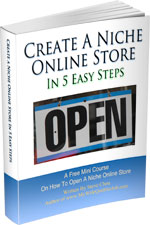
Ready To Get Serious About Starting An Online Business?
If you are really considering starting your own online business, then you have to check out my free mini course on How To Create A Niche Online Store In 5 Easy Steps.
In this 6 day mini course, I reveal the steps that my wife and I took to earn 100 thousand dollars in the span of just a year. Best of all, it's absolutely free!

